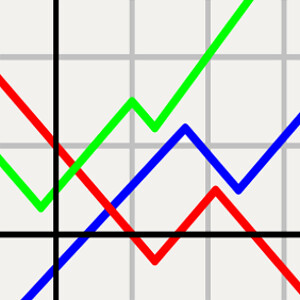Gnuplot Tutorials
 Gnuplot is an open-source command line tool for plotting 2D/3D graphs based on raw data or mathematical function expressions. It can be used interactively from the console, run in batch mode (via Gnuplot scripts) or be integrated into other tools for plotting (e.g., Octave). Gnuplot can generate different types of graphs, such as line graphs, histogram charts, scatter plots, pie charts, error bar graphs, 2D contour, 3D surface, animated trajectory, etc. It allows fully customizable style (e.g., x/y/z-axis ranges, labels, legend, title, point/line style), and can export graphs in a variety of output formats (e.g., png, jpeg, gif, svg, eps). There are Gnuplot bindings for Perl, Python, C++, Java, Ruby and Haskell, allowing Gnuplot to be used in different programming languages. Gnuplot also supports piping, so that its input or output can be piped from or to other external programs.
Gnuplot is an open-source command line tool for plotting 2D/3D graphs based on raw data or mathematical function expressions. It can be used interactively from the console, run in batch mode (via Gnuplot scripts) or be integrated into other tools for plotting (e.g., Octave). Gnuplot can generate different types of graphs, such as line graphs, histogram charts, scatter plots, pie charts, error bar graphs, 2D contour, 3D surface, animated trajectory, etc. It allows fully customizable style (e.g., x/y/z-axis ranges, labels, legend, title, point/line style), and can export graphs in a variety of output formats (e.g., png, jpeg, gif, svg, eps). There are Gnuplot bindings for Perl, Python, C++, Java, Ruby and Haskell, allowing Gnuplot to be used in different programming languages. Gnuplot also supports piping, so that its input or output can be piped from or to other external programs.
This page presents useful Gnuplot tutorials that teach you how to draw different types of plots and graph visualization with Gnuplot, how to import and process data, and how to export plotted graphs to different formats.
- How to export Gnuplot output to PNG, JPG and PDF
- How to plot data without data files in Gnuplot
- How to plot using specific rows of data file with Gnuplot
- How to plot a bar graph on Gnuplot
- How to overlay two plots in Gnuplot
- How to draw stacked histogram on Gnuplot
- How to rotate x-axis labels on Gnuplot
- How to plot ratios of values with Gnuplot
Xmodulo © 2021 ‒ About ‒ Write for Us ‒ Feed ‒ Powered by DigitalOcean
